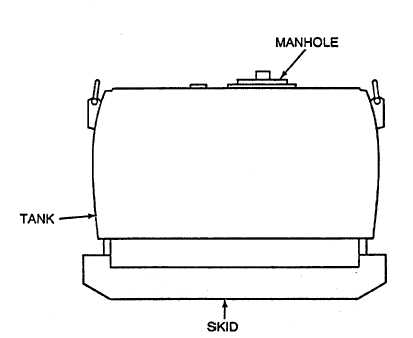TM 10-4930-236-13&P
WARNING
When using compressed air, wear safety goggles or glasses and
ensure air blast is not directed at another
person. Do not direct compressed air against the skin.
(4) When testing tank, completely dry and clean the interior and exterior of the tank of all foreign matter. When the
tank is completely dry and clean, close all openings such as valves and fill cap, plug and fill cap vent, and subject the
tank to a constant internal air pressure of 3 to 5 pounds per square inch gage (PSIG).Apply liquid detergent conforming
to P-D-223 over the entire exterior surface of the tank at a pressure of not less than 70 PSIG (hand sprayer). Applying
the liquid detergent by brush or other means is not acceptable. Observe the exterior of the tank. Leaks as evidenced by
fizzing or bubbling of the liquid detergent, surface rupture, deformation, or broken hardware shall constitute failure.
f.
Repair of the Tank Assembly.
WARNING
Applying heat or flame to a fuel tank containing residue may
result in a violent explosion, causing injury or death to
personnel. lf conditions require fuel tank repairs by welding or
other methods involving heat or flame, take care to assure that
all fumes are purged from the tank or fill tank with water before
commencing the repair. If possible, tank should be filled with
water prior to welding after being thoroughly purged of fumes.
(1) Repair all dents, cracks, breaks,
and holes in the tank. Weld ruptured weld seams
and other damage. Replace badly damaged parts.
Refer to TM 9-237.
(2) if welding repairs are required near
the bottom loading valve, refer to Paragraph 5-8 to
remove the bottom loading valve.
(3) Treat and paint the exterior of the
tank in accordance with TM 43-0139.
5-18

